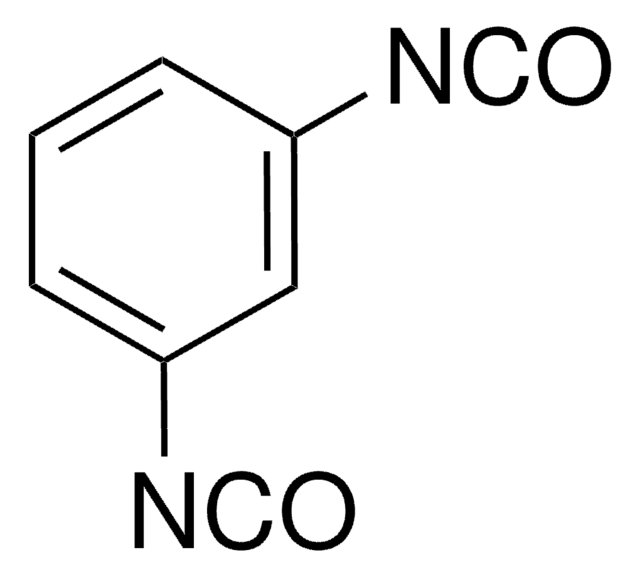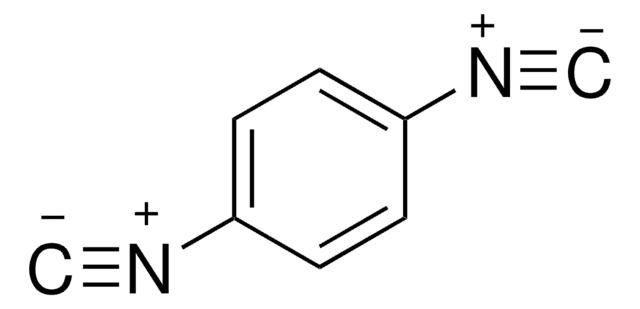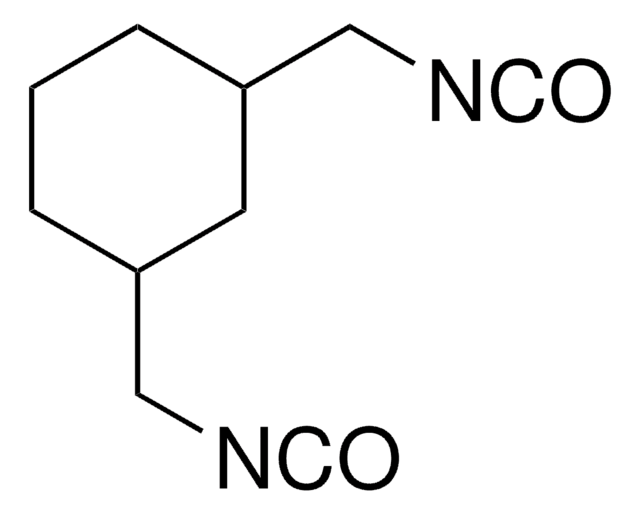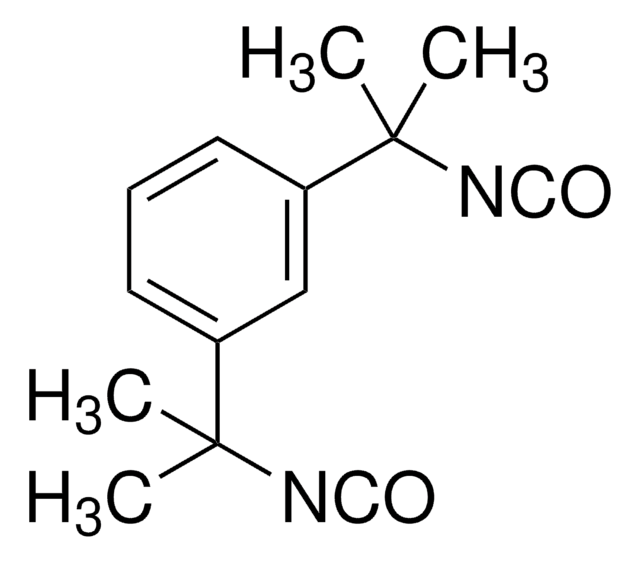Wichtige Dokumente
262242
1,4-Phenylendiisocyanat
Synonym(e):
1,4-Diisocyanatobenzene, p-Phenylene diisocyanate
About This Item
Empfohlene Produkte
Dampfdruck
<0.01 mmHg ( 20 °C)
Qualitätsniveau
Form
solid
bp
260 °C (lit.)
mp (Schmelzpunkt)
96-99 °C (lit.)
Löslichkeit
THF: soluble
acetone: soluble
ethyl acetate: soluble
toluene: soluble
Funktionelle Gruppe
isocyanate
SMILES String
O=C=Nc1ccc(cc1)N=C=O
InChI
1S/C8H4N2O2/c11-5-9-7-1-2-8(4-3-7)10-6-12/h1-4H
InChIKey
ALQLPWJFHRMHIU-UHFFFAOYSA-N
Verwandte Kategorien
Anwendung
- A reactant to synthesize high yield polymers via criss-cross addition polymerization reaction with alkyl aldazines in pyridine.
- An organic building block to prepare adamantyl-containing diurea and thiourea derivatives applicable as potent mammalian and human soluble epoxide hydrolase inhibitors.
- A coupling agent to synthesize polyethylene glycol (PEG)/silica composite material using dibutyltin dilaurate (DBTDL) as a catalyst.
It can also be used:
- As a cross-linking reagent to investigate the mechanism of enzyme immobilization on silanized surfaces.
- In the synthesis of the dipodal bis-urea receptor, a selective receptor for hydrogen sulfate.
- In the deposition of polyurea resists films via molecular layer deposition.
Signalwort
Danger
Gefahreneinstufungen
Acute Tox. 2 Inhalation - Aquatic Chronic 2 - Eye Irrit. 2 - Resp. Sens. 1 - Skin Irrit. 2 - Skin Sens. 1
Lagerklassenschlüssel
6.1A - Combustible acute toxic Cat. 1 and 2 / very toxic hazardous materials
WGK
WGK 3
Flammpunkt (°F)
>235.4 °F - closed cup
Flammpunkt (°C)
> 113 °C - closed cup
Persönliche Schutzausrüstung
dust mask type N95 (US), Eyeshields, Faceshields, Gloves
Zulassungslistungen
Zulassungslistungen werden hauptsächlich für chemische Produkte erstellt. Für nicht-chemische Produkte können hier nur begrenzte Angaben gemacht werden. Kein Eintrag bedeutet, dass keine der Komponenten gelistet ist. Es liegt in der Verantwortung des Benutzers, die sichere und legale Verwendung des Produkts zu gewährleisten.
EU REACH Annex XVII (Restriction List)
Hier finden Sie alle aktuellen Versionen:
Besitzen Sie dieses Produkt bereits?
In der Dokumentenbibliothek finden Sie die Dokumentation zu den Produkten, die Sie kürzlich erworben haben.
Kunden haben sich ebenfalls angesehen
Unser Team von Wissenschaftlern verfügt über Erfahrung in allen Forschungsbereichen einschließlich Life Science, Materialwissenschaften, chemischer Synthese, Chromatographie, Analytik und vielen mehr..
Setzen Sie sich mit dem technischen Dienst in Verbindung.














